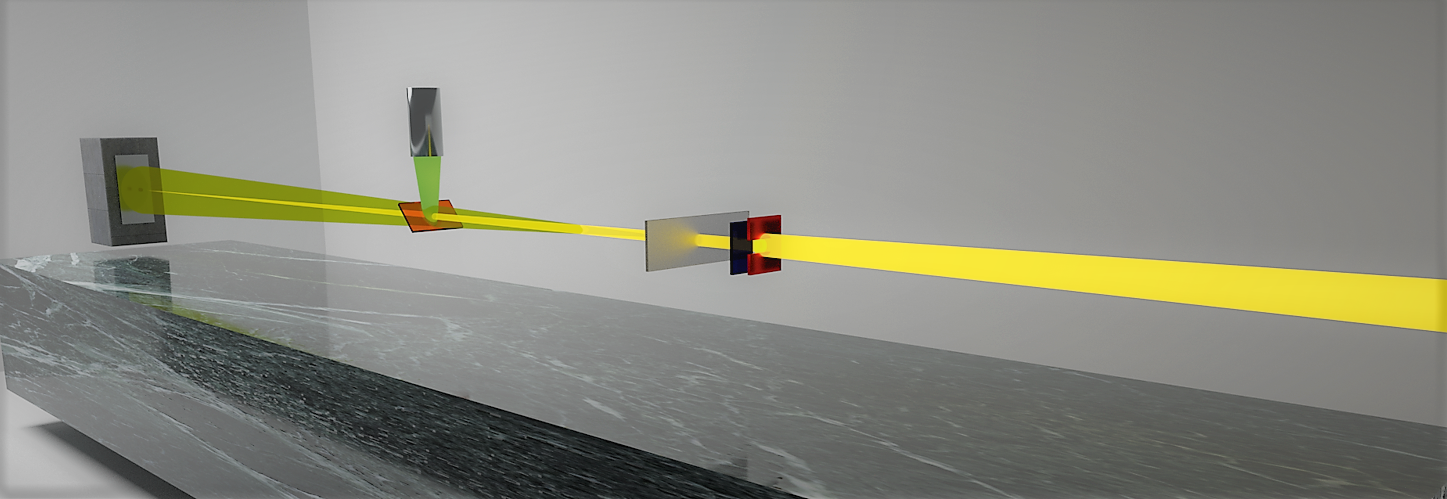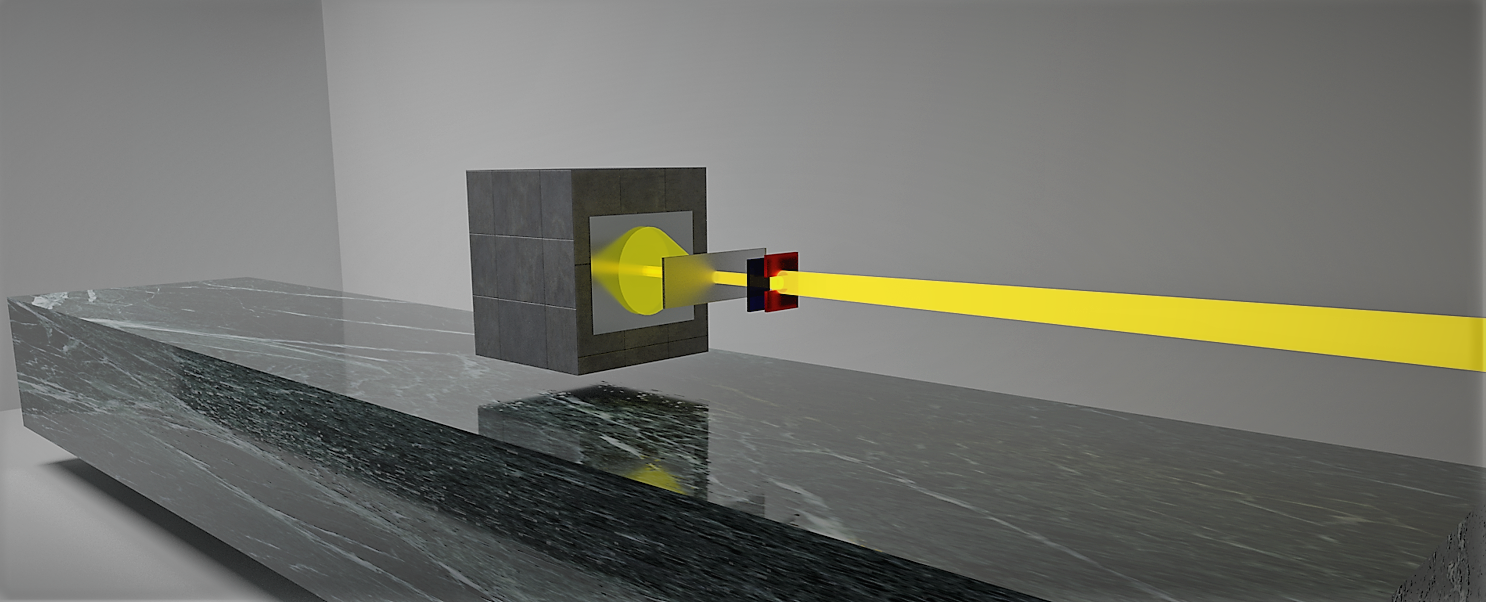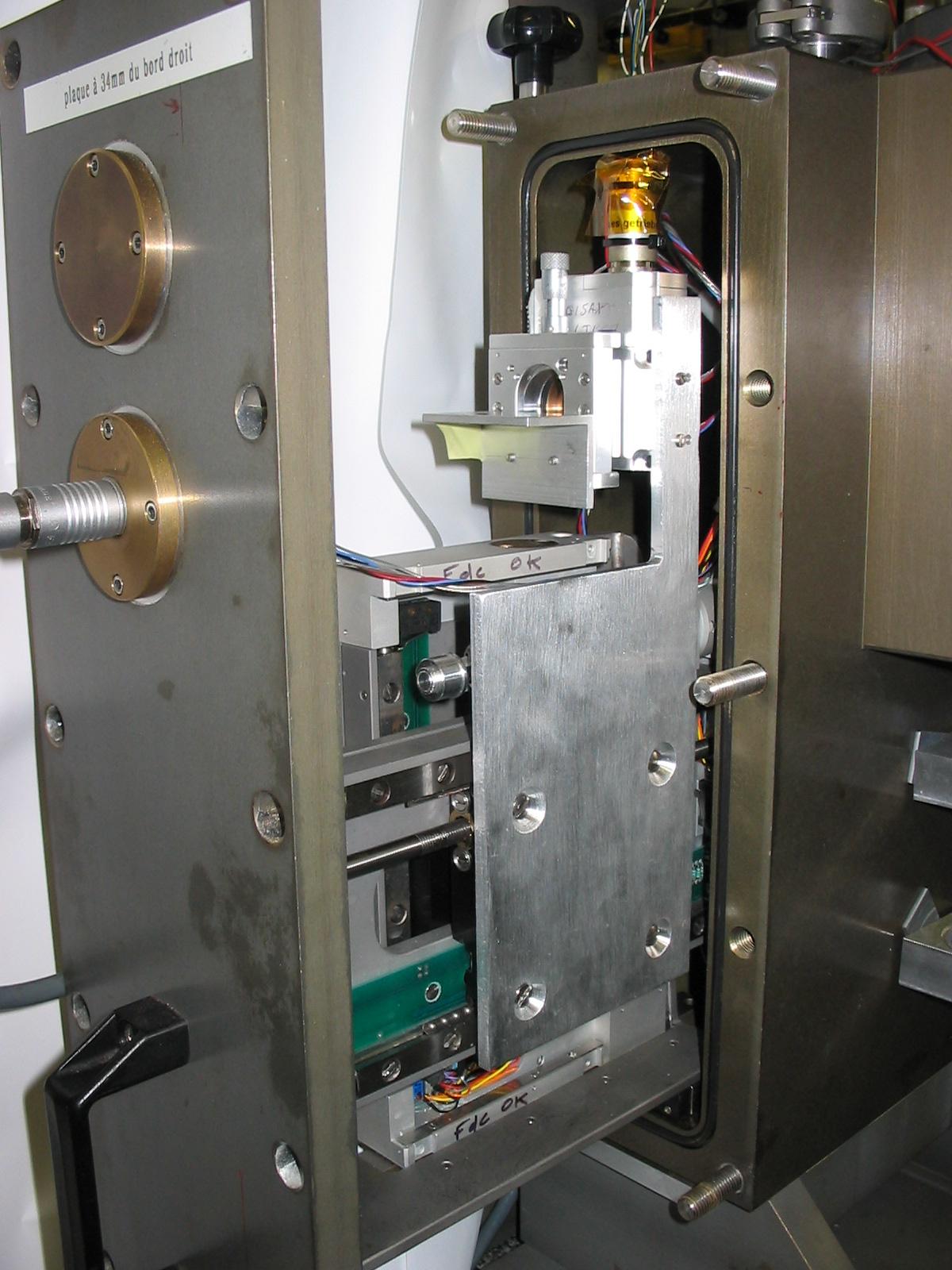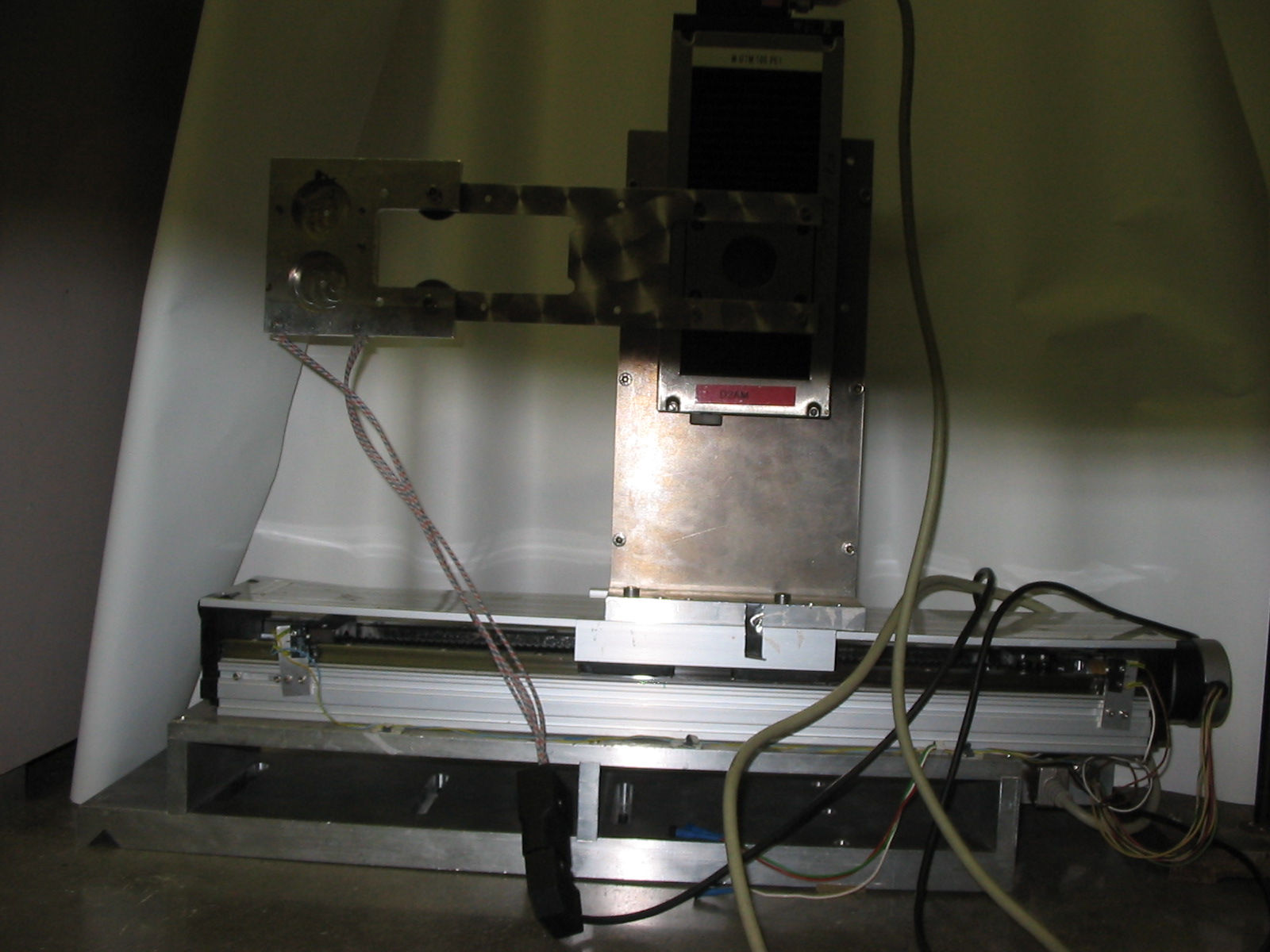SAXS / WAXS
SAXS
A SAXS experiment allow the measurement of .... Figure 1 show the experimental configuration of a typical SAXS experiment at the D2AM beamline.

Figure 1: Exprimental setup of SAX experiment on the SAX bench of the D2AM beamline.
During a SAXS experiment, the D5 detector is mounted on a tranlational stage fixed on the marble table at any desired position. Large tubes are mouted between the sample and the detector to pump the path of the scattered beam. A photomultiplicator can be installed downstream of the sample to monitor the transmitted intensity. The beam is focused on the beamstop in front of the detector (usually the D5). Several beamstops with different diameters may be used : platinum ...
WAXS

SWAXS
mall angle camera:
A modular Small Angle Scattering camera with different sample changers and camera lengths, with three options:
- very small angle (q > 6.10-4 Å-1 at 8keV) with high position stability; mandatory collaboration with the local contact.
- regular SAXS for soft condensed matter, with possibility to insert sample holders for time-resolved experiments (3.5 10-3 Å-1< q < 0.3 Å-1)
- Anomalous SAXS (recommended collaboration) (10-2 Å-1< q < 1Å-1)
For complementary informations, refer to JP Simon et al., J. Appl. Cryst. (1997). 30, 900-904.
Incoming beam slits
After the 3 slits system described in the Overview of the beamline Optic, the slit (s4) system manufactured by Riso has a 40*40mm aperture defined by four independent lips. This slit can be moved lip by lip : slit up (su4), slit down (sd4), slit front (sf4) and slit back (sb4), or with pseudo-motors gap (hg4, vg4) and offset (ho4,vo4). s4 is under secondary vacuum. It is located on the goniometer about 2.50m upstream of the SAXS table. It is used to define the beam size in the horizontal (hg4) and vertical (vg4) directions. It is worth at this stage to check that the beam is not screened by : the CCD beam shutter (diameter 6mm), the windows separating the different evacuated sections, the sample-holder, the beam-stop.
Antiscattering slits.
Just before the sample are the antiscattering slits s0, with independant lips (su0, sd0, sf0, sb0) made of polished Ta rolls as edges; they can overlap without jam by about 5mm: mind after optics alignement and before slits settings that you can screen the beam completely by moving the lips to the positive hard limits.
Overview of the experiment
The SAXS camera is a general purpose, modular instrument. Different sample environments, for soft or hard condensed matter, including in-situ triggering in time-resolved experiments, are possible. The camera length can be changed between ~270mm and 2200mm covering with photons from 5 to 20keV a q range from ~10-3 to 1 Å-1. It shares with the 7 circle diffractometer the optics (monochromator, mirrors and slits) and is constituted of modular elements set on a marble down stream the diffractometer. The horizontal beam is at 400mm over the marble and at 127.5mm from the guide rail.

Description of the camera and sample environment
- On the 7 circle diffractometer are located the selection slits s4, the incident beam monitor, the filters and the rapid CCD shutter. Antiscattering independant slits ("s0") are positioned at the front side of the marble support of the camera.
- SAMPLE CHAMBERS:
- Standardly controlled by SAXSINT : completely under vacuum. An Y-Z positioning of samples is done by stepping motors (sensitivity 0.001mm, horizontal range 100mm; vertical 75mm; centered on the beam). Home made sample holders can be fixed on this translation stage (thickness in downstream direction <5mm, in upstream up to 80mm, for holes in square of 63mm for screws M4).


One can stick samples on standard plates with 20 holes of diameter 8mm : their spacing is 20mm. The rows are labelled from A to D with Zsample= -30, -10, +10, +30 and the columns labelled from 1 to 5 (Xsample=-40, -20 , 0, +20, +40mm). - Standardly controlled SAXSEXT in air between upstream and downstream vacuum tubes (mica or kapton windows). An Y-Z positioning of 12 samples is done by stepping motors (sensitivity 0.001mm, two rows of 6 holes with horizontal range 250mm and separated vertically by ** mm).

- Particular home-made sample environment (discuss with a local contact); a DC alimentation (MIDEC 80V&9amp;7.5A ou 40V&15A) driven by an Eurotherm PID can be borrowed for furnace heating. For aligning a furnace a rotation rsamp is added to the Y-Z translations ; controlled by SAXSHT
- Standardly controlled by GISAXS: completely under vacuum. An Y-Z positioning of samples is done by stepping motors (sensitivity 0.001mm), horizontal range 20mm; vertical 5mm; centered on the beam, followed by a rotation of axis Y (0.001 degree per step) and by a manual Z translation in order that the rotation axis coincides with the sample surface.
- Standardly controlled by SAXSINT : completely under vacuum. An Y-Z positioning of samples is done by stepping motors (sensitivity 0.001mm, horizontal range 100mm; vertical 75mm; centered on the beam). Home made sample holders can be fixed on this translation stage (thickness in downstream direction <5mm, in upstream up to 80mm, for holes in square of 63mm for screws M4).
- Rear monitoring, from a retractable Kapton film moved up/down by a VPAP button, in vue of a scintillator (ISOLATED from the ELECTRICAL GROUND of its support); possibility of filter or pin holes frame insertion (attached on sample chamber)
- Rear monitoring using a rapid retractable kapton fram, driven by air pressure: SPEC command "kapton on/off"
- Vacuum tubes (250, 500 and 1000mm long) of diameter 100mm centered.
- Beamstop chamber
- X-Z translations (path of 0.001mm range +-12.5mm)
- "O" frames (100 mm) for 2d detectors ( disk beamstops of 0.7 to 3mm diameter, or home made beam stop, as in the photo a beam stop made of two wires

- 100mm circular window
- Detector supports for linear detector or for CCD detector: X translation (50mm); Z translation (100mm).




